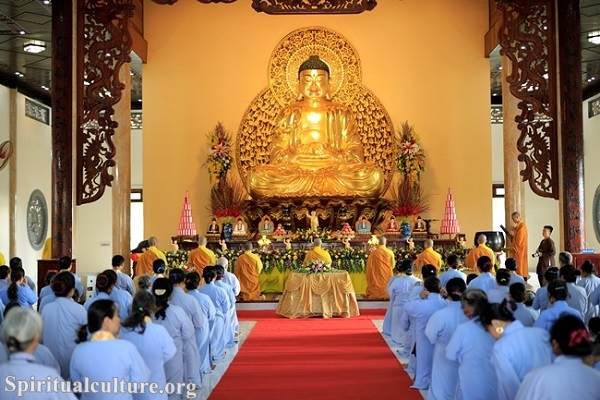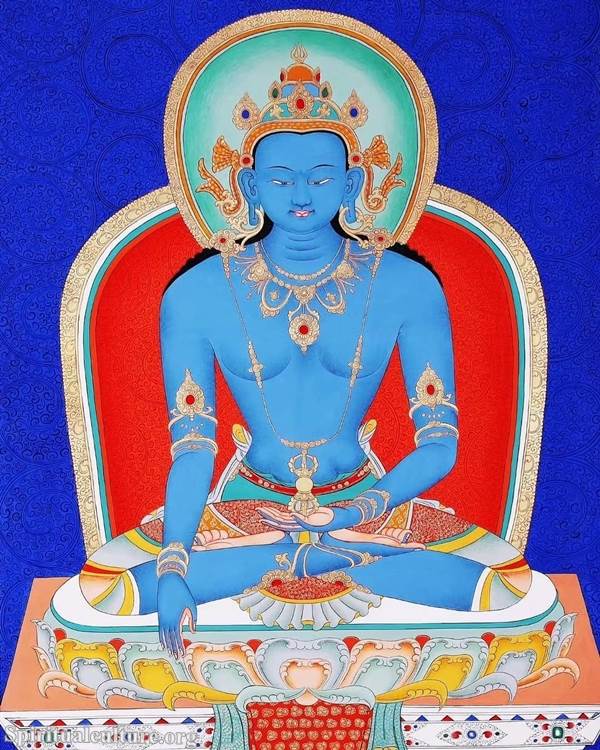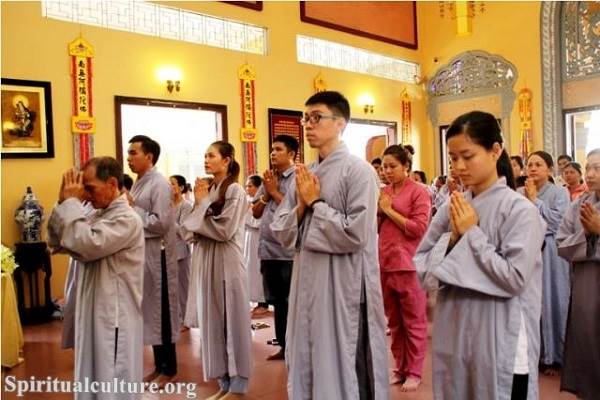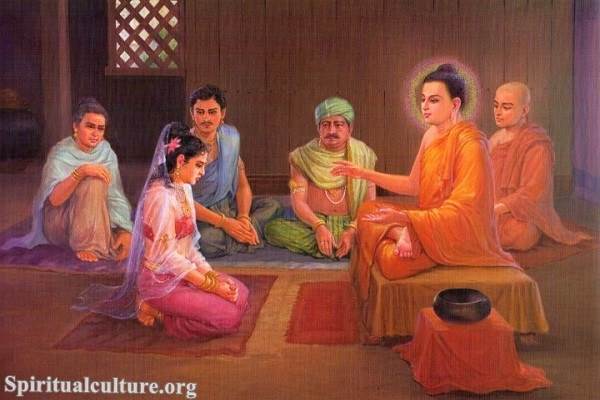In every human heart lies an ancient longing — to become more than we are, to transcend the ordinary and touch the divine essence within. In Mahayana Buddhism, this longing is beautifully expressed through the path of the Bodhisattva: one who vows to awaken not only for their own sake but for the liberation of all beings. Central to this path are the Ten Paramitas — the “perfections” or “transcendent virtues” that guide spiritual practitioners toward ultimate enlightenment.
In this article, Spiritual Culture invites you to journey into these ten luminous qualities. We will explore what they mean, why they matter, and how they can transform our daily lives into a sacred offering. These virtues are not abstract ideals; they are living practices that breathe through our words, actions, and intentions. Let us walk this sacred path together.
The Origin and Meaning of the Paramitas
Paramitas: Beyond the Shore
The term Paramita carries profound significance. Often translated as “perfection,” it literally means “gone to the other shore.” This metaphor speaks to the transition from the world of suffering and ignorance to the realm of awakening and freedom. Each Paramita represents a boat that carries the practitioner across the turbulent river of samsara toward the calm, vast ocean of Nirvana.
In Mahayana Buddhism, the Ten Paramitas serve as milestones on the Bodhisattva path. They represent a systematic training in selflessness, compassion, wisdom, and skillful action. Unlike the six perfections emphasized in earlier teachings, Mahayana extends this list to ten, revealing an even more comprehensive vision of spiritual maturity. By understanding and embodying these perfections, one cultivates the qualities of a future Buddha, making every act a step toward universal liberation.
The First Paramita: Dana (Generosity)
Generosity, or Dana, is considered the foundation of the Bodhisattva’s journey. It is not limited to giving material possessions but extends to offering time, energy, knowledge, and love. Dana invites us to loosen the tight grip of self-centeredness and experience the freedom and joy of open-hearted giving.
When we practice true generosity, we begin to see others not as separate but as extensions of our own being. This dissolves the illusion of separateness and nurtures a sense of interconnectedness. The Buddha once said that if people understood the power of giving as he did, they would never eat a meal without first sharing. This teaching reminds us that giving is not just an act of kindness but a powerful practice of spiritual liberation.
The Second Paramita: Sila (Ethical Conduct)
Sila, or ethical conduct, forms the moral backbone of the Bodhisattva path. It refers to living in alignment with ethical precepts such as non-harming, truthfulness, and integrity. Through Sila, we create a life rooted in harmlessness and respect for all beings.
Practicing Sila means being mindful of how our actions, words, and thoughts affect others and ourselves. It is the commitment to live in harmony with the universal law of cause and effect, understanding that our behavior shapes our destiny. As we cultivate ethical conduct, we foster trust, peace, and inner clarity. In this way, Sila acts as a fertile ground from which deeper spiritual insights and compassionate action can grow.
The Third Paramita: Kshanti (Patience)
Patience, or Kshanti, is the gentle strength that allows us to endure difficulties without resentment or anger. It is often considered one of the most challenging perfections because it demands deep humility and openness. Instead of reacting to adversity with hostility or avoidance, patience invites us to remain present and composed.
Kshanti is more than mere endurance; it is an active acceptance of life’s imperfections and an unwavering commitment to compassion, even toward those who harm us. The 8th-century Buddhist master Shantideva wrote, “There is no evil greater than hatred, and no asceticism greater than patience.” By practicing patience, we develop an inner fortitude that transforms suffering into an opportunity for growth and connection.
The Fourth Paramita: Virya (Joyful Effort)
Virya, often translated as “joyful effort” or “diligence,” is the dynamic energy that propels us forward on the spiritual path. It embodies the enthusiasm and determination needed to overcome laziness and discouragement. Without Virya, even the best intentions remain dormant, and spiritual growth stagnates.
This Paramita teaches us to engage wholeheartedly in beneficial activities, whether in meditation, helping others, or studying the Dharma. Joyful effort is not driven by force or obligation but arises naturally from a heart inspired by love and compassion. Like a flame that lights countless candles without diminishing, Virya renews itself through acts of service and inner dedication, infusing our journey with vitality and joy.
The Fifth Paramita: Dhyana (Meditative Concentration)
Dhyana, or meditative concentration, is the cultivation of a focused and tranquil mind. In the hustle of daily life, our minds are often scattered and restless. Dhyana invites us to gather our awareness, resting it like a clear lake that reflects the moon without distortion.
Through meditation, we develop the capacity to see our thoughts and emotions with clarity and equanimity. This calm, concentrated state becomes the foundation for deeper insight and wisdom. Dhyana also nurtures emotional resilience and inner peace, enabling us to respond to life’s challenges with grace rather than reactivity. In this way, meditative concentration is both a refuge and a powerful tool for transformation.
The Sixth Paramita: Prajna (Wisdom)
Prajna, or transcendent wisdom, is often described as the crown jewel of the Paramitas. It is the direct understanding of the true nature of reality — the insight into emptiness (shunyata) and the interdependent arising of all phenomena. Prajna allows us to perceive beyond the illusions of self and separation, awakening us to the profound unity of all life.
This wisdom is not merely intellectual but deeply experiential. It transforms the way we relate to ourselves and the world, dissolving the roots of suffering such as attachment and aversion. As the Heart Sutra declares, “Form is emptiness, emptiness is form.” This teaching invites us to see that all things are fluid and interconnected, and from this realization, boundless compassion naturally arises.
The Seventh Paramita: Upaya (Skillful Means)
Upaya, or skillful means, represents the Bodhisattva’s ability to adapt teachings and actions to suit the unique needs and capacities of different beings. Compassion alone is not always sufficient; it must be coupled with wisdom to be truly effective. Upaya embodies this union of wisdom and compassion in dynamic, creative action.
A Bodhisattva using skillful means is like a doctor who prescribes different medicines depending on the illness of each patient. They do not rigidly adhere to one method but skillfully adjust their approach, always keeping the ultimate goal of liberation in mind. This flexibility reflects deep empathy and a profound understanding of the human condition, enabling the Bodhisattva to guide others with grace and precision.
The Eighth Paramita: Pranidhana (Vow or Aspiration)
Pranidhana is the great vow or aspiration that fuels the Bodhisattva’s path. It is the unwavering commitment to attain Buddhahood for the benefit of all sentient beings. These vows give direction and meaning to the Bodhisattva’s journey, transforming personal practice into a universal mission.
By embracing Pranidhana, practitioners dedicate every thought, word, and action to the welfare of others. The famous Bodhisattva vow — “Sentient beings are numberless; I vow to save them all” — encapsulates this spirit. Such vows transcend personal liberation, embodying a love that embraces the infinite. They remind us that true spiritual practice is never self-centered but always reaches outward in compassion.
The Ninth Paramita: Bala (Spiritual Power)
Bala, or spiritual power, refers to the inner strength developed through unwavering practice and moral integrity. It includes the courage to face obstacles, the resilience to endure hardship, and the steadfastness to remain true to one’s vows even in the face of great challenges.
This power is not about dominating others or wielding supernatural abilities but about embodying a fearless and compassionate presence. It is the “lion’s roar” of the Buddha — a metaphor for the confidence and authority that arise from deep realization. With Bala, the Bodhisattva becomes a refuge for others, offering protection, inspiration, and guidance through the stormy seas of samsara.
The Tenth Paramita: Jnana (Transcendent Knowledge)
Jnana, or transcendent knowledge, represents the culmination of the Bodhisattva’s journey. It is the complete and unobstructed understanding of ultimate truth, beyond all dualities and conceptual fabrications. This knowledge transcends ordinary intellectual comprehension and is rooted in direct, unmediated experience.
Jnana embodies the realization of the non-duality of self and other, existence and non-existence. It is the luminous, all-encompassing awareness that perceives the true nature of all things without distortion. With Jnana, the Bodhisattva fully manifests enlightened activity, benefitting all beings effortlessly and spontaneously. It is the final perfection that transforms the practitioner into a living embodiment of wisdom and compassion.
Living the Paramitas in Daily Life
The Ten Paramitas are not reserved for monastics or distant spiritual heroes; they are invitations for all of us to live more deeply and authentically. In each act of kindness, every moment of patience, and each effort to understand or help another, we express the spirit of the Paramitas.
We might begin by practicing generosity in simple ways: offering a smile, listening without judgment, or sharing our time. Ethical conduct can manifest in small, daily decisions to act with integrity. Patience might mean pausing instead of reacting harshly. Each Paramita offers countless opportunities to transform ordinary moments into sacred expressions of our highest potential.
As we integrate these perfections into daily life, we slowly cultivate a heart as vast as the sky and a mind as clear as a still lake. Our life itself becomes a path of awakening — a continuous offering to all beings.
Reflect and Reimagine
The Ten Paramitas in Mahayana Buddhism offer more than moral guidelines; they present a living vision of what it means to embody awakening in the world. Each Paramita is both a mirror and a gateway, revealing our present limitations and inviting us into greater freedom and love.
Consider taking a moment to reflect: Which Paramita calls to you most strongly right now? Where can you plant seeds of generosity, patience, or joyful effort in your own life? How can you deepen your wisdom and embody skillful compassion toward those around you?
May these reflections inspire you to walk the Bodhisattva path with courage, tenderness, and unwavering joy. Let us move together, step by step, toward the other shore — not alone, but with all beings, hand in hand.
Spiritual Culture invites you to embrace this journey wholeheartedly, trusting that each act of love and each moment of clarity brings us closer to the boundless light within and around us.





